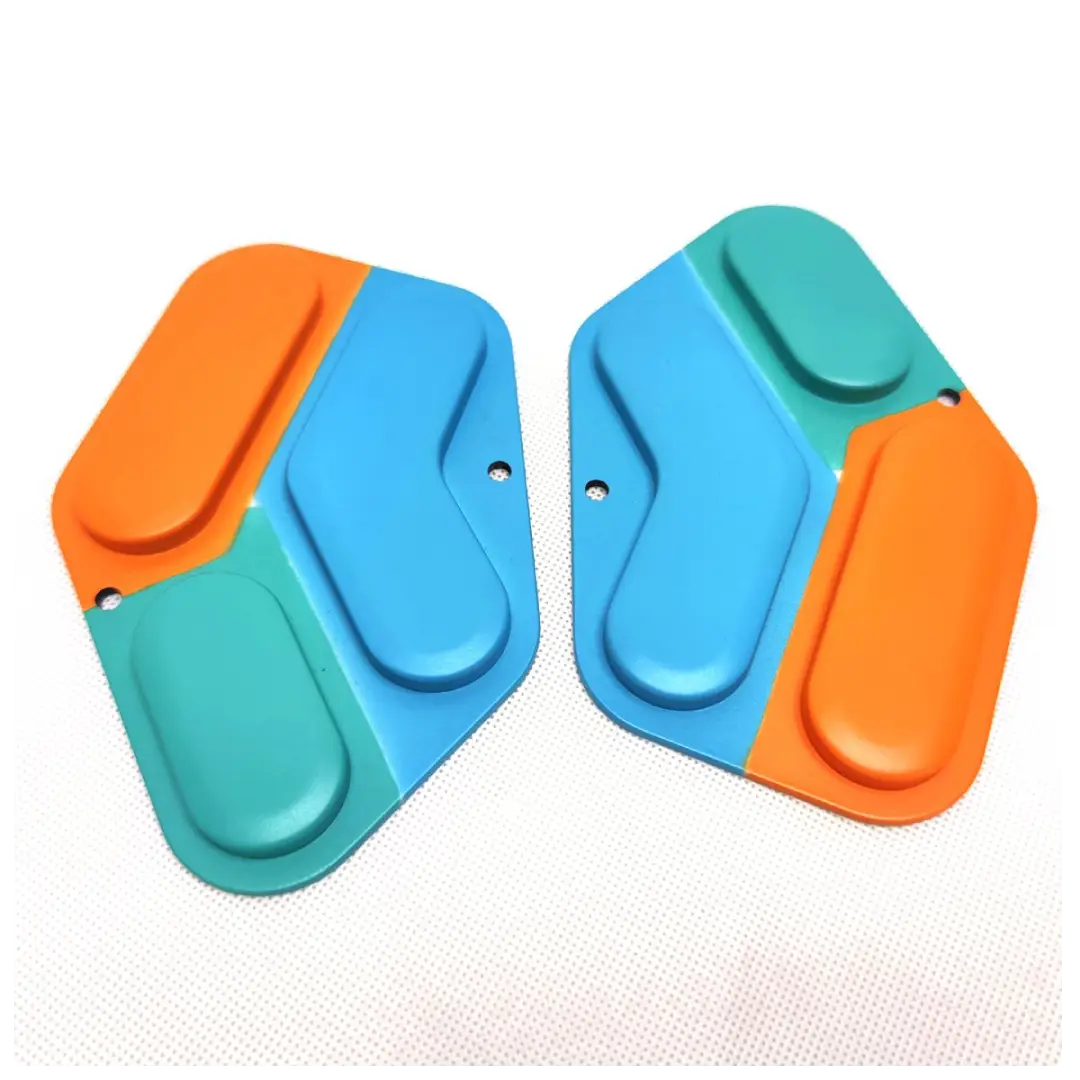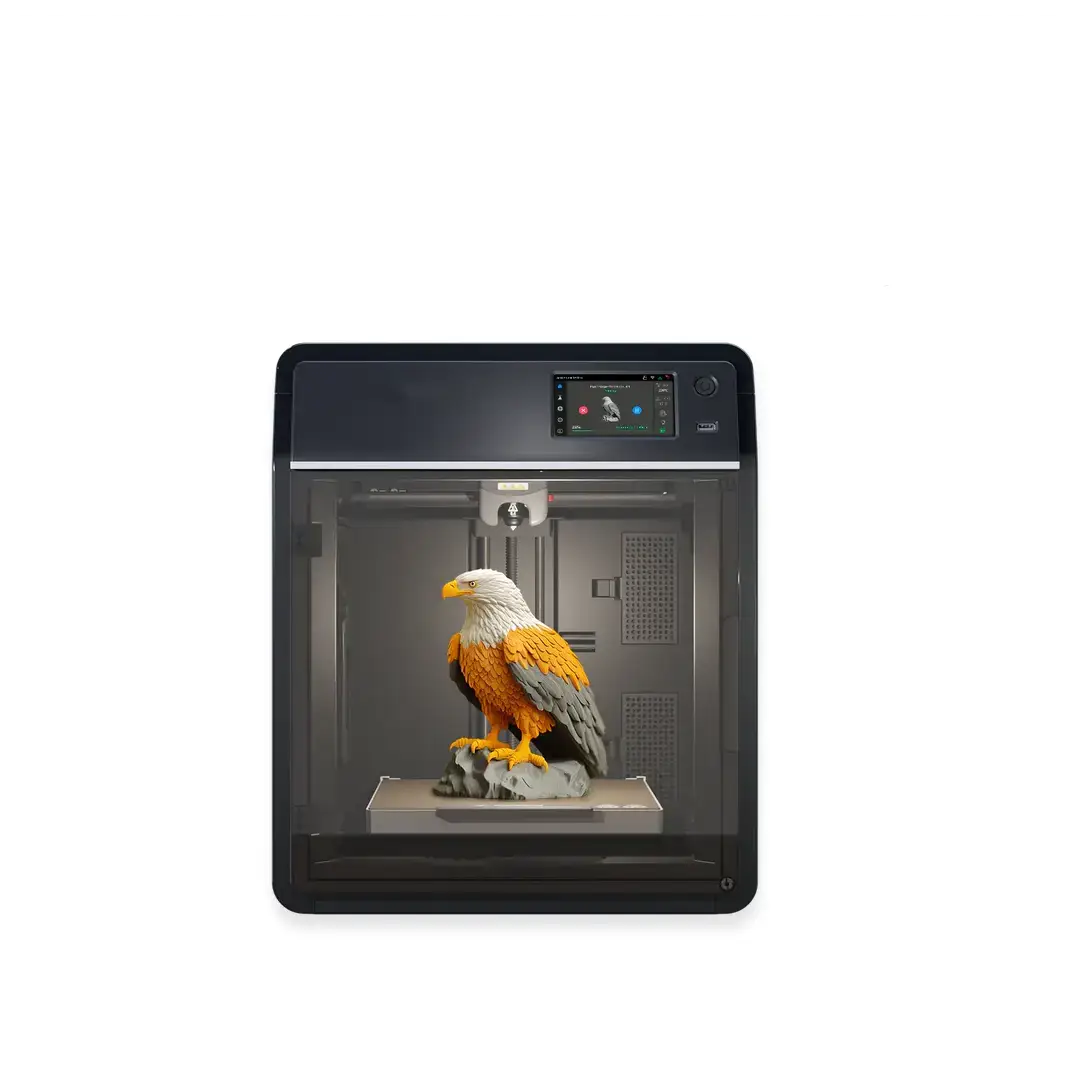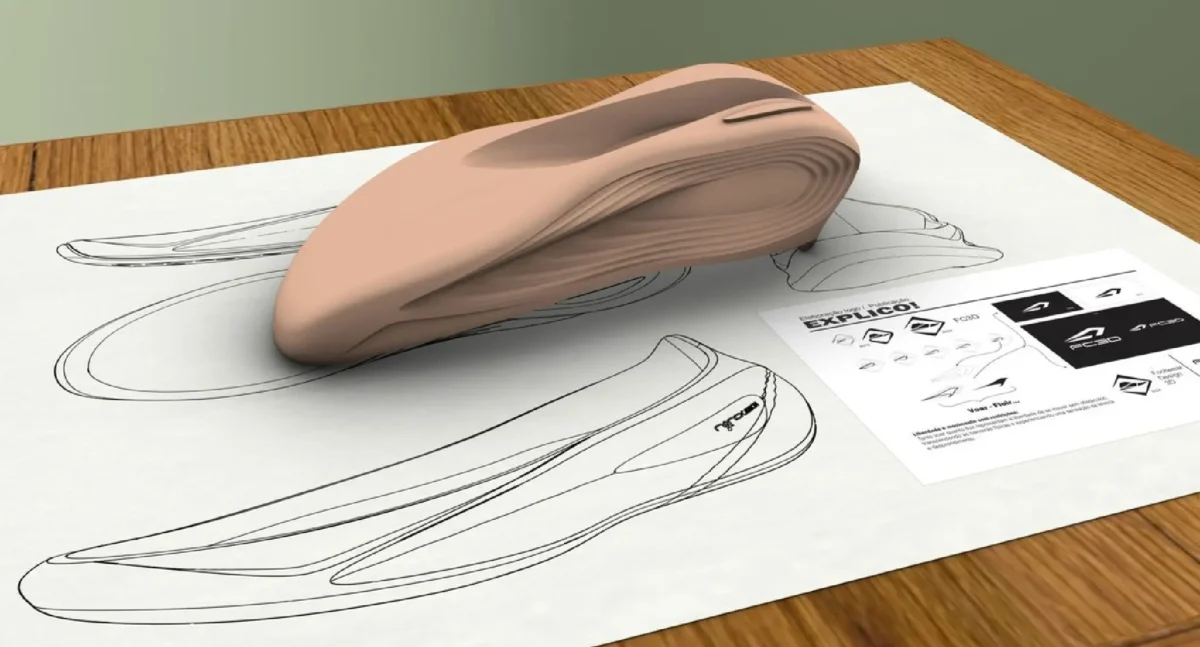Miami isn’t just beaches, nightlife, and neon lights, it’s quickly becoming one of the most exciting innovation hubs in the U.S. From Wynwood’s creative studios to Brickell’s expanding tech corridor, the city is buzzing with entrepreneurs, inventors, and startups who are building the next generation of physical and digital products. And if you’re one of them, there’s a good chance you’ve hit the same roadblock many Miami creators face:
You’ve got a brilliant idea, but no idea how to turn it into something real.
Maybe you sketched it in a notebook, mocked it up in a simple app, or thought about it endlessly during a drive down US-1. But sooner or later, every product dreamer ends up asking the same question:
“How do I turn this into something I can actually hold?”
That’s where product design prototyping enters the picture. It’s not just a technical step, it’s the bridge between imagination and reality. And if you’re building in Miami, the opportunities, resources, and local expertise available to you right now are better than ever.
At Shark Design, we help Miami-based entrepreneurs transform early ideas into tangible prototypes that are ready for user testing, investor presentations, and manufacturing. In this guide, we break down everything you need to know, without jargon, without fluff, and with insights specific to the Miami market.
What Is Product Design Prototyping? (It’s Not What You Think)
Most first-time inventors think a prototype is one perfect model, a polished “final version” of their idea.
But that’s a myth.
Product design prototyping is not a single object. It’s a process of learning.
Instead of asking, “What should my product look like?” you ask:
- How should it feel?
- How should it work?
- Will users understand it?
- Will it survive real-world use (including Miami heat and humidity!)?
- Is this idea worth the next investment step?
A prototype is simply a tool that helps you answer these questions.
The Three Main Types of Prototypes
1. The “Looks-Like” Prototype
This focuses on the visual design, shape, color, ergonomics, size. It may not function.
Think of this as the polished shell of your product.
2. The “Works-Like” Prototype
This does the job but probably looks rough.
It’s often made with temporary materials, spare parts, or quick engineering hacks.
Perfect for testing functionality or electronics.
3. The Looks-Like, Works-Like Prototype
This is where form and function meet.
It behaves like your final product and closely resembles it.
You may create one, two, or all three kinds, depending on your budget, concept, and product type.
Why Miami Is a Unique Prototyping Environment
Miami’s ecosystem gives inventors a rare advantage:
- Access to marine-focused materials and machining
- A fast-growing tech hardware scene
- Local manufacturers familiar with consumer goods, med-tech, and durability testing
- Dozens of maker spaces, fabrication labs, and 3D printing studios
This mix of creativity and hands-on capability makes Miami one of the most exciting places in the U.S. for physical prototype development, especially for early-stage inventors.
Why Skipping Prototyping Is the Riskiest Move a Miami Inventor Can Make
If you’re building a product in Florida, the last thing you want to do is skip the prototyping stage. The risk is enormous, and the potential consequences go far beyond a simple design flaw.
Here’s why.
1. A $5,000 Prototype Can Save You from a $50,000 Mistake
Imagine building a house without a foundation, then discovering halfway through that the structure is unstable. That’s what rushing into manufacturing without a prototype looks like.
Prototypes help you:
- Catch design issues
- Validate dimensions
- Confirm manufacturability
- Avoid expensive tooling changes
- Prevent mass-production defects
Jumping straight into manufacturing, especially overseas, can destroy your budget and timeline.
2. Real-World Testing Reveals Issues No CAD Model Ever Will

Digital models are helpful, but they can lie.
Only a physical prototype can reveal:
- Poor weight distribution
- Uncomfortable ergonomics
- Awkward button placement
- Fragile or weak components
- Part friction, interference, or tolerance issues
Miami-based inventors creating handheld products, beach gear, electronics, or lifestyle accessories especially need this level of testing.
3. Investors Don’t Fund Ideas, They Fund Proof
Miami’s startup landscape is competitive. Whether you’re pitching to an Angel group in Brickell or a VC in Wynwood, one thing is consistent:
Prototypes show commitment, traction, and viability.
A strong prototype helps you secure:
- Grants
- Pre-seed or seed funding
- Manufacturing partnerships
- Retail or distributor interest
If you want to validate demand, nothing is more persuasive than something potential customers can touch.
4. Your Users Will Tell You Things You Can’t Predict
Especially in Miami.
Consider:
- Will your product survive humidity or sweat?
- Will it be intuitive for diverse users (Spanish-speaking, Caribbean, Latin American backgrounds)?
- Will tourists understand how to use it instantly?
- Does it feel good in the hand on a hot day?
Your inventor prototype Florida build will uncover issues your laptop never could.
5. Hardware Startups Need Faster Iteration Cycles
Miami’s hardware startup scene is accelerating rapidly. To keep pace, you need a prototype that allows you to:
- Test quickly
- Learn quickly
- Change quickly
This is why hardware startup prototyping is becoming a core service for entrepreneurs.
The Prototyping Spectrum: From Cardboard to CNC (A Step-by-Step Guide)

This section is the heart of your journey. Below is the complete roadmap from the napkin sketch to a highly functional pre-production model.
Stage 1: Low-Fidelity Prototypes (The “Quick & Dirty”)
Before any advanced engineering, materials, or manufacturing comes into play, you start simple.
Common Low-Fidelity Methods
- Sketches
- Foam models
- Cardboard mock-ups
- Paper cutouts
- Clay or putty models
These might look rough, but that’s the point. They’re incredibly fast and cheap.
What These Prototypes Help You Test
- Basic shape and size
- User flow
- Hand-feel and ergonomics
- Early concept validation
- Core idea feasibility
Why It Matters for Miami Creators
If your idea needs to fit in a beach bag, survive outdoor use, or be comfortable in a hot climate, this early testing is invaluable. You’d be surprised how many inventors discover obvious problems in these simple mockups, problems that could’ve cost thousands to fix later.
Stage 2: Digital Prototypes & 3D Printing

Once you’ve validated the basics, it’s time to bring your product into a digital environment.
Digital CAD Modeling
Using software like SolidWorks, Fusion 360, or Rhino, we create a 3D model of your product that represents:
- Internal structure
- External aesthetics
- Material decisions
- Mechanical components
- Engineering tolerances
This becomes the blueprint for every physical prototype that comes after.
Why 3D Printing Is a Game-Changer for Miami Businesses
With 3D printing Miami services easily accessible, you can now create a high-accuracy prototype in hours, not weeks.
Benefits include:
- Extremely fast turnaround
- Low cost compared to machining
- Ability to test multiple iterations quickly
- Great for early fit and assembly checks
- Perfect for hardware startups that need to iterate fast
Types of 3D Printing Commonly Used
- FDM for quick, cheap builds
- SLA for high-detail, smooth-surface models
- SLS for durable, functional parts
What This Stage Helps You Achieve
- Validate aesthetics
- Check part relationships
- Understand internal space constraints
- Improve ergonomics
- Test durability at a basic level
Digital prototyping is the stage where your concept begins to look and feel “real.”
Stage 3: High-Fidelity & Functional Prototypes
Now we’re entering professional territory. This is where your prototype becomes almost production-ready.
Common High-Fidelity Prototyping Methods
1. CNC Machining
Produces precise, durable parts, great for metals, plastics, and mechanical components.
2. Vacuum Casting
Ideal for short runs of plastic parts that look almost identical to injection-molded versions.
3. Electronics Prototyping
For smart devices, sensors, IoT products, or wearables.
4. Custom Finishing
Like painting, texturing, branding, polishing, electroplating, or UV coating.
Why This Stage Matters
- Used for investor presentations
- Critical for user testing
- Required for certifications (FCC, CE, medical, etc.)
- Helps finalize materials and suppliers
- Allows you to pitch to manufacturers confidently
This is where your prototype becomes a legitimate representation of your future product, both inside and out.
The Most Important Rule: Prototyping Is Iterative
This entire journey isn’t a linear checklist. You don’t simply go from Step 1 → Step 2 → Step 3 and call it a day.
Instead, you:
- Build
- Test
- Learn
- Improve
- Repeat
The fastest-moving hardware founders in Miami cycle through these steps multiple times, sometimes dozens, before landing on a prototype they’re satisfied with.
At Shark Design, we don’t just build your prototype; we help you learn from it.
A Miami-Centric Approach to Prototyping
Many inventors don’t realize how important locality is in product development.
If your product is being prototyped across the country, or worse, overseas, simple improvements can take weeks. Shipping costs add up. Communication delays become headaches. The entire process slows down.
But when you’re working with a Miami product designer, everything changes.
1. Faster Turnaround Means Faster Progress
When your design and prototyping team is local:
- You can meet in person
- You can test prototypes same-day
- You can make changes instantly
- You eliminate expensive shipping
- You keep momentum on your idea
That’s why prototyping services Miami offer such an advantage for local startups.
2. Designing for Miami’s Unique Environment
Miami isn’t like the rest of the country. Your prototype needs to account for:
- Humidity: Electronics and plastics behave differently.
- Heat: Materials expand; surfaces get hot in sun exposure.
- Salt Air: Products used outdoors or near the coast must resist corrosion.
- Tourism: Products must be intuitive for users from all over the world.
Whether you’re designing beach accessories, marine tech, luxury goods, hospitality devices, or lifestyle products, Miami’s climate and culture play a huge role in product performance.
3. Miami’s Leading Local Industries Support Prototyping
Many of Miami’s businesses benefit directly from great prototypes:
- Marine & boating industry
- Tourism & hospitality
- Healthcare and med-tech
- Consumer electronics
- Lifestyle and fitness products
- Luxury goods
Shark Design works at the intersection of these industries, helping businesses test, refine, and validate ideas before they go into mass production.
4. Local Collaboration Beats Remote Guesswork
There’s something powerful about walking into a local studio, touching your prototype, discussing changes face-to-face, and seeing improvements happen in real time.
- It keeps your idea alive.
- It keeps you excited.
- It keeps you moving forward.
That’s the advantage a Miami inventor or business owner gets by working with Shark Design.
Your Prototype Is Your Passport to Production
If you’re holding onto a product idea, whether it’s a small gadget, a physical consumer product, a medical device, or a completely new invention, there has never been a better time to build it in Miami.
- Prototyping isn’t a luxury.
- It’s not an optional step.
- It is the most powerful and practical phase of the entire product development process.
It saves money, reduces risk, attracts investors, and gives you total clarity on what your product can become.
And you don’t have to navigate any of it alone.
Final Thoughts
At Shark Design, we help Miami creators, from first-time inventors to growing businesses, turn vision into reality with expert product design prototyping, 3D printing Miami services, functional models, and full end-to-end product development.
Stop letting your idea live only in your head. We’re your Miami-based partners in building the next big thing. Let’s discuss your project over a coffee. Your first prototype could be one meeting away. Contact Shark Design today and bring your idea to life

